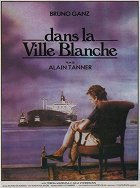Directed by:
Alain TannerScreenplay:
Alain TannerCinematography:
Acácio de AlmeidaComposer:
Jean-Luc BarbierCast:
Bruno Ganz, Teresa Madruga, Julia Vonderlinn, José Wallenstein, Pedro Efe, Joana Vicente, Cecília GuimarãesPlots(1)
Late last summer someone said to me: "Make a film in Portugal." I once watched the boats sailing up the Tajo estuary and turning in their anchors with the movement of the tides. It left quite an impression on me and reminded me of an age long-forgotten ... and of the mysteries of Lisbon's old town. I mused a while and then watched a film on TV starring Bruno Ganz. I decided to have him sail up the Tajo in one of those boats. And between the blanks in my memory I visualised Rosa, who worked in a hotel bar near the harbour, and Elisa, the woman who lived by the Rhine. I didn't write a script, I simply let some visions of a distant past and another, more recent past trickle through my mind: a few memories, a few images, and what one refers to as "strong emotions". Had I written a script, I would have added a level of meaning.
And this time I didn't want it to have any meaning, I only wanted a subject. Then I drove back to Lisbon, a stranger here and all alone. Once there, I traced Paul's footsteps (Paul is the hero's name; my heroes are always called Paul or Pierre ...). Then we began shooting, from one day to the next... on the first day of shooting, we discovered a clock in the bar where Rosa worked. The hands moved in the wrong direction, backwards. Because of this clock, Paul decides to blank out everything: both around him and in his head. I am free, he says; and time is suspended. And us? We shoot from one day to the next. And on Sunday I film the streets on super-8. These pictures look as if I had opened a 35mm film with a scalpel in order to look inside. And inside Paul's head too. (Alain Tanner)
(Berlinale)
Reviews (1)
We actually have two axolotls here, one conditioning the other, and together they form two sides of a great film. Bruno Ganz as a deserter from his naval duties, as an emigrant from his true homeland, tries to anchor himself in a new country. At sea, there is only a tiny chamber and infinity beyond it, while on land, it might be the opposite. Love is also infinite, and furthermore, "the female body is so wide." However, the axolotl, "disturbing time and space with its silent indifference," disturbs him both at sea (here it is necessary, which is why we can speak of an occupational illness that our hero has inevitably transferred onto land) and on land (the Mexican axolotl is an amphibian...). Love also needs time and space. The other axolotl is the film footage shot by Ganz, which, with its melancholic silent beauty, is not only a reflection of its creator but also a great intermediary between the unity of form and content achieved by Tanner in this film.
()

